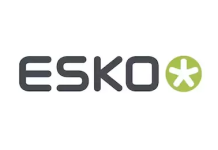Elena Knight, Marketing and Content Director for FuturePrint and writing for drupa, looks into the leading role that brands and innovative technology companies are playing in promoting sustainability through the adoption of paper packaging alternatives.
The packaging industry is poised for a transformative shift in the coming decade, particularly in the area of paper-based packaging. This shift is driven by a growing movement against plastic packaging and the recognition of its environmental impact. Governments and brands are actively pushing for change through legislation and innovative packaging solutions.
Brands Taking The Lead
Major brands are proactively seeking sustainable alternatives and spearheading the shift towards paper-based packaging. Absolut Vodka for example, recently announced a trial of a paper-based bottle for its flagship vodka product as part of their dedication to a more sustainable future. The Global Director of Future Packaging at Absolut, Elin Furelid, cited high recycling rates and the appealing tactile nature of paper as key factors behind their decision. According to TheSpiritsBusiness.com, in line with Absolut’s goals, the brand proudly announces its trajectory towards becoming a carbon-neutral product by 2030. Impressively, Absolut’s distillery emits a staggering 98% fewer emissions compared to the industry average, solidifying its position as a leader in sustainable practices.
Another example is Diageo, a prominent drinks maker, who has partnered with Pilot Lite to establish Pulpex, a UK-based paper bottle company who continuously strive to redefine the boundaries of sustainable packaging. Pulpex creates customised paper bottles suitable for various liquid products, and Diageo plans to package Johnnie Walker whisky in Pulpex bottles. According to Diageo, these thoughtfully designed containers, actively contribute to Diageo’s commitment to Goal 12 of the United Nations Sustainable Development Goals, focusing on fostering ‘Responsible Consumption and Production’. Renowned brands such as PepsiCo, Unilever and Castrol have also joined forces with Pulpex to develop paper bottle solutions for their iconic products. This product is empowering brands to reimagine packaging designs without compromising on versatility and quality.
Overall, these examples show that leading food and drinks brands are embracing paper packaging on a large scale. Mars announced its trial of Mars bars wrapped in paper, moving away from traditional plastic wrappers. Nestle, on the other hand, has developed a high-speed flow wrap line to package Kit-Kats in paper. Brands are driving innovation in the development of paper packaging solutions. They are investing in research and development to create packaging materials that are both sustainable and functional. Through collaboration with packaging manufacturers, they are pushing the boundaries of what is possible with paper packaging, exploring advanced technologies and techniques to enhance its durability, resistance to moisture and other desirable characteristics.
Archipelago Technology, an influential player in packaging coating, has responded to the growing demand for sustainable packaging solutions by introducing a game-changing innovation. Their non-contact coating machine uses PowerdropTM technology – a large-scale inkjet printing system that jets viscous liquids as droplets with precision and consistency. Powerdrop can jet sticky glue-like coatings that other technologies, such as spray, struggle with. Importantly every drop goes just where it’s meant to and nowhere else. Powerdrop enables packaging manufacturers to coat rigid paper containers making them waterproof while keeping the inner paper core clean, so it can be recycled. Because Powerdrop uses highly concentrated coating fluids and has virtually no overspray there are major savings in energy use and overspray disposal, this gives it low running costs and low greenhouse gas emissions. Powerdrop can help save thousands of tonnes of CO2 on a single production line, while addressing the longstanding challenge of maintaining the structural integrity of paper containers when exposed to liquids, presenting a viable and eco-friendly substitute for single-use plastic plates, bowls, cups and bottles.
With immense potential in this market, we can expect a rapid influx of further innovations aimed at meeting the demand for sustainable paper packaging alternatives some of which we will hopefully be able to see showcased at drupa 2024.
The shift from plastic and glass to paper packaging holds numerous advantages for various stakeholders. Consumers stand to benefit from the shift to paper packaging in several ways. Firstly, paper packaging aligns with their increasing demand for eco-friendly products and packaging. By choosing brands that prioritise sustainability, consumers can make environmentally responsible choices and contribute to a greener future. Additionally, paper packaging often has a tactile and aesthetic appeal that enhances the overall product experience. It can provide a premium, natural, and rustic feel that resonates with consumers seeking a more authentic and organic image. Furthermore, paper packaging is lightweight and easy to handle, making it convenient for consumers to carry and dispose of responsibly.
Retailers can leverage the popularity of paper packaging to enhance their eco-friendly image and appeal to environmentally conscious shoppers. By offering products in paper packaging, retailers can differentiate themselves from competitors and attract a growing market segment of conscious consumers. This can lead to increased footfall, higher sales, and improved customer loyalty. Additionally, retailers can collaborate with brands that prioritise sustainability and reinforce their commitment to environmental responsibility, further strengthening their brand image and market positioning.
Within the supply chain, the adoption of paper packaging creates opportunities for innovation and growth throughout. Packaging manufacturers, paper suppliers, and other stakeholders can collaborate to develop new technologies and solutions that cater to the demand for sustainable packaging. This shift stimulates the development of a circular economy, where materials are recycled, reducing waste and minimising environmental impact.
Brands that embrace paper packaging can enhance their image and reputation by positioning themselves as environmentally responsible and forward-thinking. Sustainability is a growing concern for consumers, and brands that prioritise sustainable practices often enjoy increased customer loyalty and positive brand perception. By adopting paper packaging, brands demonstrate their commitment to reducing plastic waste and their efforts to contribute to a greener future. This can result in improved brand equity, customer trust, and a competitive advantage in the market.
Governments worldwide are implementing stricter regulations on plastic packaging, creating a regulatory landscape that incentivises the adoption of sustainable alternatives. By proactively embracing paper-based packaging, brands can ensure compliance with evolving legislation and reduce the risk of fines or penalties. This proactive approach can enhance brand reputation and demonstrate a commitment to social and environmental responsibility.
The packaging industry stands on the brink of a major transformation, with paper packaging emerging as a leading alternative to plastic and glass. Notable brands across the food and drinks sectors are at the forefront of this shift, recognising the importance of sustainability and seizing the opportunity to meet consumer demands. By embracing paper packaging, these companies not only contribute to a cleaner environment but also benefit from increased consumer loyalty, improved brand image, and compliance with evolving regulations. As the next 10 years unfold, the paper packaging revolution promises significant growth, innovation, and a more sustainable future for the industry as a whole. The collaborative efforts of brands, retailers, and policymakers are key to driving this revolution forward, ultimately paving the way for a greener and more sustainable world.
DRUPA
https://www.drupa.com





















